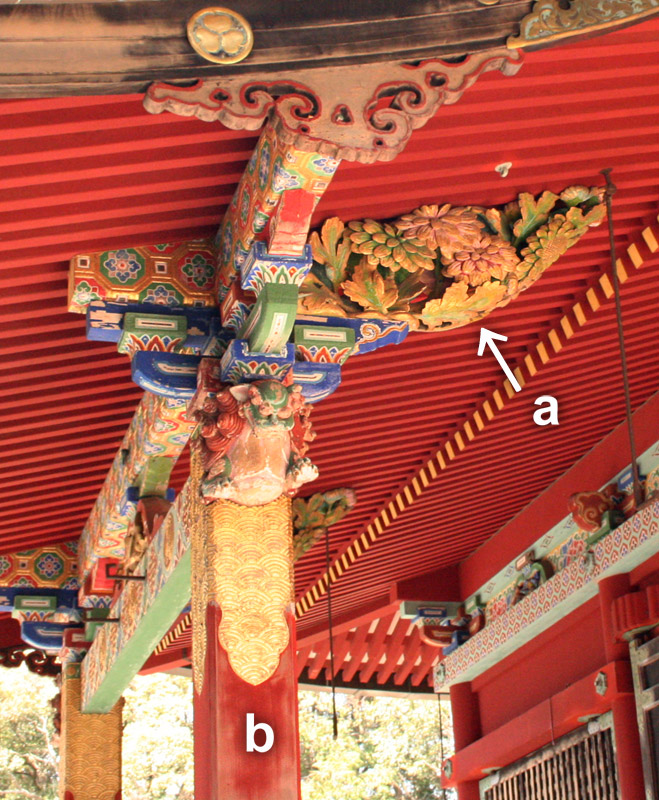|
||
 |
||
2 A rafter strut. An elaborately carved strut used to fill the wedge-shaped gap that appears between the rafters and the bracket complex *tokyou 斗きょう, placed on the outer pillars kouhaibashira 向拝柱, where the rafters slope downward over the step canopy *kouhai 向拝 beyond the front wall of a temple or shrine building. Tabasami appeared in the Kamakura period after the introduction of the step canopy. At first, molding was a common filler, but between the 14-16c, tabasami became beautifully decorated with peony, lotus and arabesque patterns. From the late 16-19c, extremely elaborate decoration was applied. Brilliantly colored animals, plants, flowers, heavenly beings,and phoenixes in varied arrangements were favored.

a) tabasami 手挟 b) kouhaibashira 向拝柱
Takisan Toushouguu Haiden 滝山東照宮拝殿 (Aichi)
Takisan Toushouguu Haiden 滝山東照宮拝殿 (Aichi)
(C)2001 Japanese Architecture and Art Net Users System. No reproduction or republication without written permission.
掲載のテキスト・写真・イラストなど、全てのコンテンツの無断複製・転載を禁じます。

